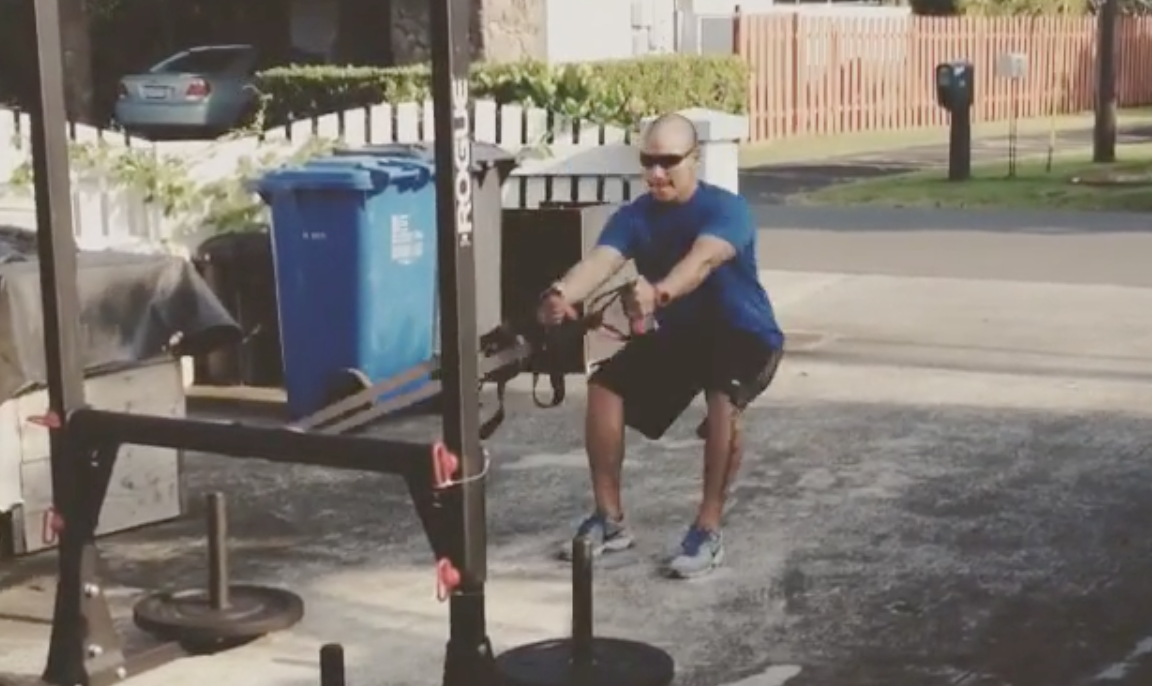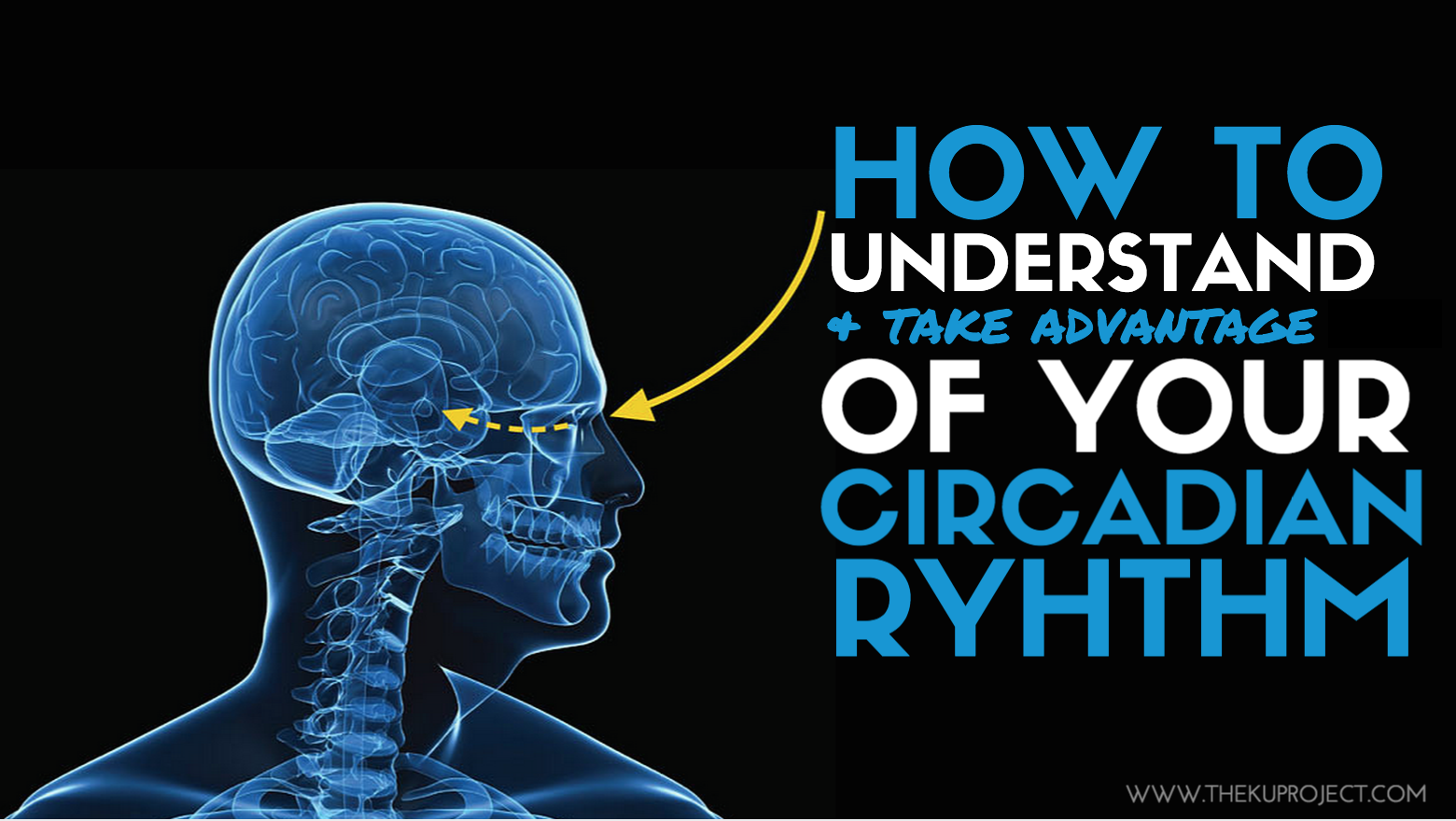My background comes from training athletes for various sports. I’d watch the sport, observe their movement, and the flow of their performance be it running, jumping, swimming, changing directions, hitting, rotating, and more.
I’d look at all the pieces and then sit down at my desk and plan a program to improve overall performance and prevent injury in order for the athlete to continue to do what they are suppose to do – kick ass in their sport or career.
Today, I still train athletes but I also work with every day people who work for a living and still need to be strong, healthy, move well, have the ability to perform their specific task, and keep from being injured.
Every so often, I get contacted by an athlete looking for an idea on how they should be training specifically for their sport. Lately, I’ve had several Honolulu Police Officers asking about exercises they can do and how they should be training for their job.
In this article, I’ll share how I’d take the KU METHOD Training Guideline and cater it towards a Honolulu Police Department Officer or any law enforcement officer.
A basic flow of our training is as follow:
Ho’omakaukau: Warm-up
Ho’opahu: Explosive/Speed Training
Ho’okupa’a: Strength
Ho’oulu: Supplemental/Accessory Work
Ho’omau: Conditioning
Ho’omohala: Cool down
Warm up: The main focus of a warm-up is to increase your core temperature and prepare your body for the day’s training. Simple as that. You don’t need a big choreographed warm-up routine.
Another thing we do is foam roll. Everyone has their thoughts on foam rolling. We like it. Foam rolling makes us feel good. So we do it. After foam rolling, many go into a series of dynamic movement prep such as that is specific towards what we have planned for training that day:
Handwalks
Lunge and Twist
Knee Circles
Bird Dogs
Glute Bridges
TRX Y-T-Ws
etc…
Again, be mindful of your time as well. Warming up is not meant to be lazy nor be longer than your actually training session.
Physical Requirements of HPD
Now that we have the warm up out of the way, we can dive into the training and program. Again, looking at the demands of a Honolulu Police Department Officer.
First, to pass the HPD Physical Readiness Assessment (PRA) which is a pass/fail test, you must be able to perform the following:
Agility Run – 21.6 seconds
Bench Press – 68% of body weight
300-Meter Run – 82.8 seconds
Push Ups – 24 in 2 minutes
Sit Ups – 24 in 1 minute
1.5-Mile Run – 21 minutes
Honestly, I think police officers should be randomly tested every year to make sure they stay physically fit and healthy in order to perform their job. According to the Bureau of Labor Statistics, Officers need to be in excellent shape as the work involved is often strenuous. They must be constantly prepared to jump into action and rely on their strength, stamina, and quick reflexes to end a confrontation or even save a life.
How HPD Officers can Train Kū
Now that you have a basic understanding of the requirements to be physically prepared to be an HPD officer and are aware of the responsibility of having to jump into action at a moment’s notice, we can get into the programming to Build a Kū Body specifically for HPD.
We covered the warmup. The last pieces of the program are:
Ho’opahu: Explosive/Speed Training
Ho’okupa’a: Strength
Ho’oulu: Supplemental/Accessory Work
Ho’omau: Conditioning
Ho’omohala: Cool down
the fun stuff…
This program is broken down for training 3 days per week (45-60 minute sessions) with 1-2 days of aerobic/endurance work.
Purpose of program below is to improve strength, posture, and improve conditioning levels.
DAY 1:
Ho’opahu:
Week 1: Power Skips – 3 x 20 yards, 10 yards sprints from stomach x 6
Week 2: Power Skips – 2 x 30 yards, 10 yards sprints from pushups position x 6
Week 2: Power Skips – 2 x 30 yards, 10 yards sprints from half kneeling position x 8 (4 ea side)
Ho’okupa’a and Ho’oulu:
Week 1:
A1. Goblet Squat: 3 x 6
A2. Pull ups or Lat Pulldown: 3 x 6
B1. Reverse Lunge: 3 x 6
B2. Alt DB Incline Bench: 3 x 6/s
B3. Prone Y-Ws: 3 x 15
C1. DB Row: 3 x 8
C2. Weighted Overhead Sit-ups: 3 x 10
C3. Glute Bridges: 3 x 10
Week 2:
A1. Goblet Squat: 4 x 6
A2. Pull ups or Lat Pulldown: 4 x 6
B1. Reverse Lunge: 3 x 6
B2. Alt DB Incline Bench: 3 x 6/s
B3. Prone Y-Ws: 3 x 15
C1. DB Row: 3 x 8
C2. Weighted Overhead Sit-ups: 3 x 10
C3. Glute Bridges: 3 x 10
Week 3:
A1. Goblet Squat: 4 x 6
A2. Pull ups or Lat Pulldown: 4 x 6
B1. Reverse Lunge: 4 x 6
B2. Alt DB Incline Bench: 4 x 6/s
B3. Prone Y-Ws: 4 x 15
C1. DB Row: 3 x 10
C2. Weighted Overhead Sit-ups: 3 x 12
C3. Glute Bridges: 3 x 12
Ho’omau:
Jingle Jangle: Perform 3 rounds of 4 reps. Rest 20 seconds between reps, rest 2 minutes between rounds.

Week 2: 3 Rounds of 5 reps. Rest 20 seconds between reps, rest 2 minutes between rounds.
Week 3: 3 Rounds of 5 reps. Rest 15 seconds between reps, rest 90 seconds between rounds.
DAY 2:
Ho’opahu:

Week 1: Squat Jumps for height or Box Jumps – 3 x 5 (reset after each jump), Pro Agility: 3 ea way, rest 30-60 seconds. (DO NOT turn it into a conditioning drill)
Week 2: Seated Squat Jumps for height or Seated Box Jumps – 3 x 5 (reset after each jump), Pro Agility: 3 ea way, rest 30-60 seconds. (DO NOT turn it into a conditioning drill)
Week 2: Seated Squat Jumps for height or Seated Box Jumps – 3 x 6 (reset after each jump), Pro Agility: 3 ea way, rest 30-60 seconds. (DO NOT turn it into a conditioning drill)
Ho’okupa’a and Ho’oulu:
Week 1:
A1. Deadlift: 3 x 6
A2. DB Should Press: 3 x 8
B1. Seated Rows: 3 x 8
B2. Step ups: 3 x 8/s
B3. Dips or Push-ups: 3 x 12
C1. KB or DB Swings: 3 x 10
C2. Face Pulls: 3 x 10
C3. Planks: 3 x ALAP
Week 2:
A1. Deadlift: 4 x 6
A2. DB Should Press: 4 x 8
B1. Seated Rows: 3 x 10
B2. Step ups: 3 x 8/s
B3. Dips or Push-ups: 3 x 12
C1. KB or DB Swings: 3 x 12
C2. Face Pulls: 3 x 12
C3. Planks: 3 x ALAP
Week 3:
A1. Deadlift: 4 x 6
A2. DB Should Press: 4 x 8
B1. Seated Rows: 4 x 10
B2. Step ups: 4 x 8/s
B3. Dips or Push-ups: 4 x 12
C1. KB or DB Swings: 3 x 12
C2. Face Pulls: 3 x 12
C3. Planks: 3 x ALAP
Ho’omau:
Week 1: MB Total Body Circuit: 10 reps of each exercise, 2 rounds with 2 minute rest between rounds
Week 2: MB Total Body Circuit: 10 reps of each exercise, 2 rounds with 90 second rest between rounds
Week 3: MB Total Body Circuit: 10 reps of each exercise, 2 rounds with 90 second rest between rounds
DAY 3:
Ho’opahu:

Week 1: Agility Square: 8 total drills (DO NOT turn it into a conditioning drill)
Week 2: Agility Square: 8 total drills (DO NOT turn it into a conditioning drill)
Week 2: Agility Square: 8 total drills (DO NOT turn it into a conditioning drill)
Ho’okupa’a and Ho’oulu:
Week 1:
DB COMPLEX:
DB Hang Clean and Press x 6
DB Squats x 6
DB Renegade Rows x 6/s
3 Rounds with 90 second rest in between
BB COMPLEX:
RDL x 8
Upright Row x 8
Reverse Lunge x 8/s
Mountain Climber x 8/s
3 rounds with 90 second rest in between
Week 2:
DB COMPLEX:
DB Hang Clean and Press x 6
DB Squats x 6
DB Renegade Rows x 6/s
4 Rounds with 90 second rest in between
BB COMPLEX:
RDL x 8
Upright Row x 8
Reverse Lunge x 8/s
Mountain Climber x 8/s
3 rounds with 75 second rest in between
Week 3:
DB COMPLEX:
DB Hang Clean and Press x 6
DB Squats x 6
DB Renegade Rows x 6/s
4 Rounds with 75 second rest in between
BB COMPLEX:
RDL x 8
Upright Row x 8
Reverse Lunge x 8/s
Mountain Climber x 8/s
4 rounds with 75 second rest in between
Ho’omau:
Week 1: MB Slams / Push-ups / Squat Jumps – 6 rep ladder: Record time: _____
Week 2: MB Slams / Push-ups / Squat Jumps – 6 rep ladder: Record time: _____
Week 3: MB Slams / Push-ups / Squat Jumps – 6 rep ladder: Record time: _____
Ho’omohala: Cool down
For cool downs, everyone has their own way of going about it. I usually just go for a small walk to calm my breath and shake out my body. There may be times where I lay down and regain focus on my breath. Lastly, I might work on some mobility work while still coming back to the breath. In the end, the best thing is a cold shower – the kind that makes you want to scream.
WHAT ABOUT OFF DAYS?
You may be wondering about what you can do on your OFF DAYS. I honestly don’t think you need to be running for miles on the track but there are benefits towards going for a run. Unless you are actually a runner, I’d suggest TEMPO RUNS

TEMPO RUNS should be used more as recovery or light runs. If you haven’t ran in a long time, scale it down to striding 60 yards, and jog/walk 50. As for how many? Start with 3-4 rounds. Really important to make sure that the strides are more like a 75% speed (it’t not a jog or sprint). Tempo Runs can be done 1-2 days out of the week. These Tempo Runs are not meant to be grueling.
Aside from Tempo Runs on your Off Days, you can also choose to do light activity like going for a hike, paddle boarding, go beach and catch some waves, just something active. And if you must, you can take the day off and have complete rest.
WHAT ABOUT NUTRITION?
A training program without nutrition isn’t complete. With that being said, I’m not going to tell what how much or what you should eat. But you can follow these KU NUTRITION GUIDELINES which will get you started on the right path.
Again, nutrition is essential in order to see optimal results and you cannot outwork a crappy diet.
TRAIN FOR PERFORMANCE NOT FATIGUE
The trend in today’s fitness scene is to show how hard you train and how shitty of a workout you just did. You see pictures of people laying the ground in puddles of sweat gasping for air. They say it build mental toughness and trains the mind to be strong. I understand that but I’m also aware that if you are a law enforcement officer and you perform workouts that leave you with aches and pains the following day, not only are you putting yourself at risk of injury but also those who rely on you to keep them safe.
It is a difficult task to give out a program like this without actually being able to observe what exactly is going on. Because as a coach, I’d be able to make adjustments and make sure you are getting the right amount of work done. The reason why I wrote this program and article is to give those of you out there looking for a little guidance or a different approach to your training.
I see training more than just building muscle and strength. Training should not only do those things but also make sure you are able to perform at your highest level possible in whatever work you do.
If you are a Law Enforcement Officer reading this, I’d like to say Mahalo for your service in protecting and keeping our communities safe. Aloha.



